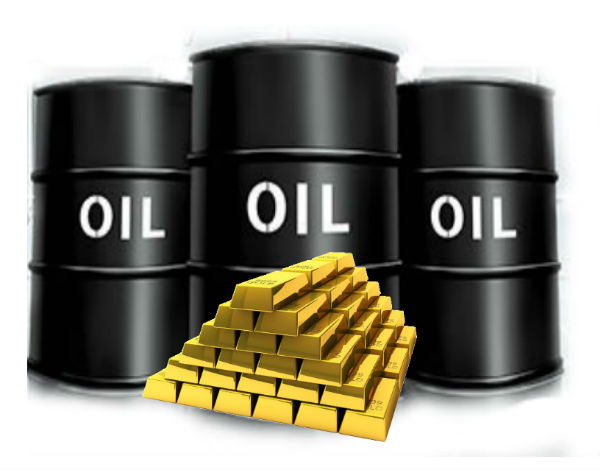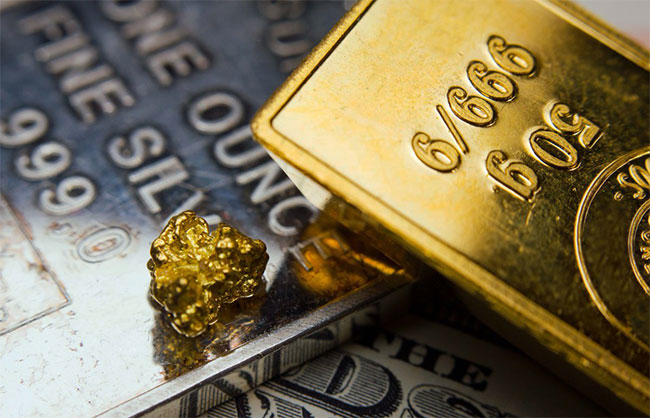Best Commodities To Invest In: Analyzing 4 Different Sectors
If you are looking for ways to diversify your portfolio, look no further than commodity investments. Commodities can help investors reduce their portfolio’s volatility and help fight against inflation. They can hedge against rampant stock market volatility and high levels of inflation amid a slowing economy.
Many commodities are in tight supply while their demand continues to rise. This dynamic can help boost the value of commodities in the future, providing some support to your investments. The great thing is, there are many commodities to choose from with different characteristics and benefits. Here is a list of the best commodities you can invest in.

Oil and gold are two popular commodity investments.
Energy
One of the 11 market sectors is energy. The sector is made up of construction, oil rig management, drilling and energy production to name a few. It consists of three main segments including electricity, oil, and natural gas. In total, its market capitalization is $3.17 trillion. While the broader market is down, the energy sector has been one of the best performing market sectors in 2022.
Energy can be a great commodity investment because virtually all market sectors rely on energy to operate. Oil and gas investments have provided investors with reliable and high returns, making it an attractive part of an investment portfolio. There is a lot of competition in the energy sector. Companies are investing and expanding their businesses to find new ways to generate value in the evolving energy space.
Oil and Natural Gas
Oil and gas companies are known for generating strong and consistent cash flow. Their stocks tend to provide attractive dividend yields. But with higher rewards comes higher risk due to the fluctuating prices of oil and gas. Volatility is normal for commodities such as energy but determine if you can manage this risk and if energy has a place in your diversified portfolio.
Uranium
As demand for cleaner forms of energy arises, uranium could see rising demand as an alternative energy source. The main usages of uranium are in nuclear reactors and power plants to generate electricity. Investors can’t trade uranium directly because it’s a radioactive material. However, you can gain exposure to the commodity through stocks and ETFs.

Agriculture
If you’re looking for a commodity that provides a higher investment yield in its category, agriculture is an option. It’s an asset class that increases in value over time and rises with the pace of inflation. Agriculture consists of wheat, soybeans, cattle and corn to name a few. Investors can buy agriculture stocks or ETFs.
Agriculture is known for its competitive returns and is considered a low volatility asset. Agriculture is an asset that will always be needed. In difficult economic times, consumers may cut back on discretionary purchases. But it is unlikely that people will cut back on food, making agriculture a low-risk investment.
Commodity futures contracts on the other hand can be volatile. These contracts are agreements to buy or sell a certain amount of a commodity for a specific price on a particular date in the future. This type of trading tends to be more risky. This is why institutional and commercial producers are typically the participants in this market.
Industrial Metals
Industrial metals are high-demand commodities such as coal, copper, aluminum, lithium, nickel and cobalt. They are important components to the technologies and physical infrastructures we use on a daily basis. These metals play an important role in the U.S. economy. Some economists monitor the change in copper prices because it has been considered an economic indicator for economic recession since it is used in many industries.
.jpg)
Manufacturing electric automobiles at a Tesla factory.
Even though the economy is slowing, demand for industrial metals commodities will persist. This is particularly true of renewable energy and the production of electric vehicles (EV). EVs are powered by batteries that require lithium, nickel and/or cobalt. As the push for environmentally-friendly transportation continues, demand for EVs may continue to rise.
Industrial metals can be invested in through futures contracts, ETFs, or buying shares of stock in companies involved in working with industrial metals. This is unlike precious metals, where you can physically invest in gold and silver.
Precious Metals
Precious metals are some of the most popular commodities to invest in. This holds true whether you prefer to purchase precious metals as exchange-traded funds, stocks, or in their physical form. Precious metals like gold, silver, and platinum have stood the test of time as stable and reliable investments.
Gold
Gold is an asset that has been around for ages. People around the world value the yellow precious metal for its many features. Use cases include rarity, luster, and protection against inflation, to name a few.
Gold is considered a safe haven asset in times of economic uncertainty and stock market volatility. When the economy is not doing well, investors tend to flock to gold because of its long-term stability and price appreciation over time. An increase in the price of gold could be an indication that the economy is struggling.
The spot price of gold is currently valued at about $1,730 per ounce and is down about 1.79% over the last six months. Meanwhile its performance is much better than the S&P 500, which has fallen more than 19% year-to-date.
There are many benefits of holding gold, but the best way to get the most out of holding this asset is to understand why you want to have it. Keep in mind, gold is not a dividend-yielding asset, nor does it produce cash flow. However, investing in gold is one option to diversify your investment portfolio.

Gold bars and silver bars are well-established investments in bullion.
Silver
There are many compelling reasons to buy silver. Similar to gold, silver is a real form of money. This means the precious metal cannot be printed nor can its value depreciate. Silver can be a great commodity investment because demand in this market is growing while the supply of silver is constrained.
Silver demand is led by industrial use cases, green energy projects, solar panels, electric vehicles, and batteries. Like gold, you may notice changes to silver’s spot price when the stock market declines or during political and economic uncertainty. Investor demand for silver also increases when there are economic challenges or stock market fears rise. This is why it's considered a safe-haven asset, like gold.
Silver has been undervalued compared to gold. Its current spot price is at about $19, a significantly cheaper precious metal option. This may be because gold is in higher demand than silver, the market for silver is more volatile, and gold has more applications.
If you want to get involved with silver investing, you can invest in silver coins, purchase silver ETFs or buy into stocks that are linked to silver.
Platinum
Platinum is another precious metal that is a popular commodity investment. It is mostly used in the auto industry, the jewelry market, along with industrial applications. There is also strong investment demand for platinum. Most of platinum’s demand comes from China followed by Europe.
There are several headwinds for platinum such as the recent COVID-19 lockdowns in China and Russia’s war in Ukraine. These are impacting its supply and demand. Nonetheless, the outlook for the platinum market appears to be positive with automotive, jewelry, and industrial demand expected to rise in 2023 to 2026 according to the World Platinum Investment Council.
Read more about investing from the expert authors at Gainesville Coins:
How to Diversify Your ETF Portfolio
How to Invest in Gold and Silver IRAs
7 Proven Reasons to Invest in Gold
Investing in Coins: Guide for Investors and Hobby Collectors
Investing in Palladium: Is Palladium a Good Investment?
